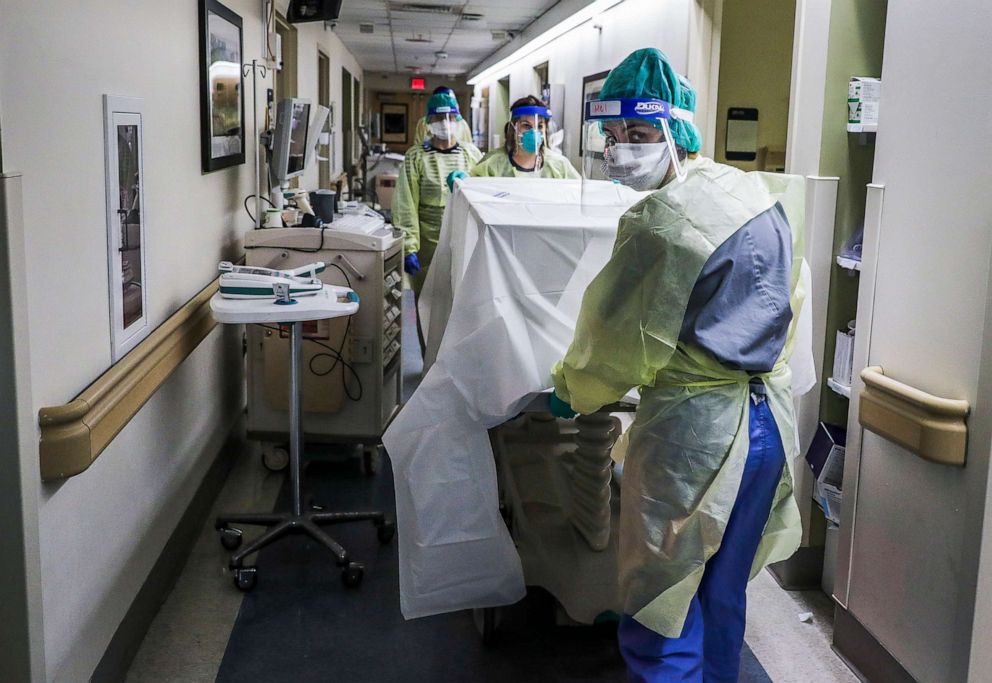US has hit 1 million COVID deaths, but the number is likely higher
Excess mortality estimates are markedly higher than the official toll.
The United States hit the tragic milestone of 1 million COVID-19 deaths on Thursday, according to the White House, but researchers say the actual pandemic death toll -- including people who died from the pandemic's collateral damage -- is actually much higher.
Beyond the COVID-19 death toll, the pandemic also wreaked havoc on everyday life.
Doctors' appointments were missed, cancer treatments postponed. People were afraid to go to the hospital and some did not want to be a burden to the overstretched medical system. There were not enough hospital beds and elective surgical procedures were delayed. Some medical providers left the field or retired early because they could not take it anymore, worsening the existing healthcare staff shortage.
All these situations contributed to what researchers called excess mortality. In other words, reported COVID-19 deaths only account for a part of the story.
Using excess mortality estimates, a recent analysis in The Lancet found that by the end of last year, the number of people who died in the United States because of the pandemic was almost 40% higher than the official US COVID death toll of 820,000.
There are many reasons why excess deaths are higher than the reported death counts.

“Health care systems do not list COVID-19 as a cause of death without a positive SARS-CoV-2 test. Therefore, the deaths that occurred earlier in the pandemic, before testing was readily available, or in places with limited testing abilities, deaths due to COVID-19 were unlikely to be included in the official count,” said lead investigator Dr. Haidong Wang, associate professor of health metrics sciences at the University of Washington in Seattle.
There is also no global consensus on when a death of someone infected with COVID should be reported as a death due to COVID.
“There can be a gray area when it comes to coding a death and attributing it to COVID, particularly when someone may have been infected weeks to months prior” said John Brownstein, Ph.D., an epidemiologist and chief innovation officer at Boston Children’s Hospital. He is also an ABC News medical contributor.
Excess mortality has been used for decades by epidemiologists to understand the impact of various infectious diseases. It also provides numerical data about the number of people who died due to the conditions caused by the pandemic that may be different from baseline conditions.
“For example, excess mortality includes the deaths due to late diagnoses from missed screening appointments, difficulty accessing primary care, and lengthened emergency department wait times,” said Brownstein.

In many countries, excess deaths are estimated to be much higher than recorded COVID. The recent Lancet study suggests about 18.2 million excess deaths have occurred globally between Jan. 1, 2020 and Dec. 31, 2021 as a result of the COVID pandemic--three times the COVID death count estimated by Johns Hopkins University.
“Now that excess mortality data have been collected, further studies need to assess why different states and countries were better or worse off and what can be done to improve health systems,” said Wang.
A recent report produced by The Poor People's Campaign, in collaboration with the U.N. Sustainable Development Solutions Network, found that COVID disproportionately affected poorer communities in the United States, highlighting the deadly consequences of poverty, economic insecurity and systemic racism.
Doctors say that as we reach this sobering milestone, it's more important than ever for Americans to visit their primary care doctor for a regular check-up, check in with loved ones who might be struggling and refocus on building healthy habits.
Jess Dawson, M.D., a master's of public health degree candidate at Johns Hopkins Bloomberg School of Public Health, is a contributor to the ABC News Medical Unit.



